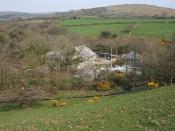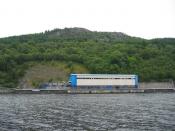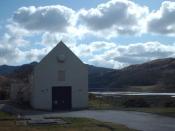Hydro-electric power is currently the world's largest renewable source of electricity, accounting for 6% of worldwide energy supply or about 15% of the world's electricity. However, in some countries, hydro-electric power is a lot more common, for example, in Canada, where HEP supplies 60% of the electricity needed. Traditionally thought of as a cheap and clean source of electricity, most large hydro-electric schemes being planned today are coming up against a great deal of opposition from environmental groups and native people.
The first recorded use of water power was a clock, built around 250 BC. Since that time, humans have used falling water to provide power for grain and saw mills, as well as a host of other applications. The first use of moving water to produce electricity was a waterwheel on the Fox River in Wisconsin in 1882; two years after Thomas Edison unveiled the incandescent light bulb. The first of many hydro-electric power plants at Niagara Falls was completed shortly thereafter.
Hydro-electric power continued to play a major role in the expansion of electrical service early in this century, both in North America and around the world. Contemporary Hydro-electric power plants generate anywhere from a few kW, enough for a single residence, to thousands of MW, power enough to supply a large city.
Early hydro-electric power plants were much more reliable and efficient than the fossil fuel fired plants of the day. This resulted in a proliferation of small to medium sized hydro-electric generating stations distributed wherever there was an adequate supply of moving water and a need for electricity. As electricity demand soared in the middle years of this century, and the efficiency of coal and oil fuelled power plants increased, small hydro-electric plants fell out of favour. Most new hydro-electric development was focused on huge...


